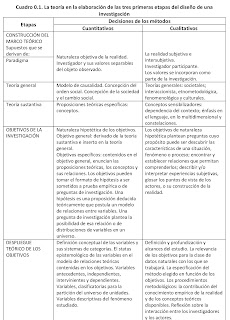AHERN, Jack F. (2016): Novel Urban Ecosystems Concepts, Definitions
Selim Abdel CASTRO SALGADO, M. Arq. //Doctorado en
Arquitectura y Urbanismo
Ficha de lectura
AHERN, Jack F. (2016): Novel Urban Ecosystems Concepts, Definitions
and a Strategy To Support Urban Sustainability and Resilience
Abstract
(…) In this
“Century of the city”, for the world to be sustainable and resilient, cities
must be an essential part of the solution –and novel urban ecosystems will play
a fundamental role.
Introduction
The world
is undeniable in new and uncharted territory, the Era of the Anthropocene –in
which the impacts and artifacts of humans have become global in scale, and
comparable to the geological forces that defined prior eras. In this context,
the conventional wisdom that separates and opposes “nature” and “cities” is no
longer accurate and certainly not productive to meet current and future
challenges.
We know that
the future will demand new conceptions, new paradigms and new structures for
urban nature –including its appearance, its spatial dimensions, its functions
and complexity, and ultimately its reflection on human values and aspirations.
The new global urban demography will cause humanity to rethink its most
fundamental concepts and conceptions of nature (…) Romantic notions of “the
balance of nature” are no longer realistic, appropriate or even useful. The
term “novel urban ecosystems” is increasingly engaged to represent the totality
of urban nature and to inform and guide planning, design and management of
cities to meet human needs in the Anthropocene.
A typology of novel urban ecosystems
Novel
ecosystems, known in ecology as emerging ecosystems, are new combinations of
species that arise through human action, environmental change and the
introduction of species from other regions.
(…) novel
urban ecosystems have “no-analog” and are increasingly the subject of research
to understand their origins, ecological trajectories and opportunities for
developing new management goals and approaches.
“Living organisms and their non living environment are inseparably interrelated and interact each other. Any unit that includes all of the organisms in a given area interacting with the environment so that a flow of energy leads to clearly defined trophic structure, biotic diversity, and material cycles within the system is an ecological system or ecosystem”
This
seminal definition focuses on biotic-abiotic interactions as the essence of
ecology (…) landscape ecology subsequently extended Odum’s ecosystem concept to
the landscape scale with a focus on landscape pattern and its effect(s) on
landscape process(es) in human dominated landscapes. Urban ecology extends the
spatial and functional perspectives of ecosystem and landscape ecology to
cities –with a fundamental interest in the application of ecological theory and
knowledge to address human-dominated landscapes, including urban landscapes and
regions.
The
Millenium Ecosystem Assessment defined four categories of ecosystem services
that collectively represent the entirety of what humans need and receive from
nature: Supporting, Provisioning, Regulating and Cultural services.
(…)
Ecosystem
services and ecosystem disservices are those functions structures and aspects
of culture that can be either beneficial or detrimental for human well-being.
(…)
Here, I
offer a “working” definition of novel urban ecosystems as: Ecosystems that
persist or arise in cities, resulting from –and structured by- intentional or
indirect human management actions (including inaction/ abandonment); with
unique species composition and structure influenced by biotic introductions and
invasions; and that provides a suite of ecosystem services/disservices
resulting from interactions of the biota with the altered abiotic urban
environment.
This
definition can be expanded to outline a typology of novel urban ecosystems that
include four types: Remnant/ Restored, Abandoned/ Ruderal, Horticultural/ Formal,
and Green Infrastructure-related. This typology is based on the level and type
of urban biodiversity and species composition, and the extent of human
intervention and management.
4
Relict NUEs
provide a memory of the pre-urban ecosystem, and may serve as reference
ecosystems to monitor response to climate and other changes and to serve as
models for ecological restoration.
Nature in
cities, and biodiversity in particular, will play an essential role in
providing the ecosystem services that every city relies on to be sustainable
and resilient. In addition to making our cities smarter and more efficient in
multiple ways, we need to employ biodiversity to assist this unprecedented
challenge.
5
(…) Here is
an interesting example of urban ecology where biodiversity has “learned” to
process waste materials that are not found in nature, but that exist in most
cities. The challenge for NUEs it to better understand such urban biodiversity
and the ecosystem services that it can deliver.
NUEs need
to be understood at multiple scales –from the microscopic to the metro-region.
At broader scales connectivity is important because many ecosystem services
depend on corridors to form networks that operate at broader scales (…) when
connectivity is diminished, the functions that operate at broad scales are
compromised.
6
The imperative
to employ innovative practices, and also to design for a particular place
presents a dilemma to designers. What kind(s) of site-specific research are
needed to adapt innovations from other locations to a local application?
(…) An
answer to this dilemma is the concept of adaptive design, also known as
learning-by-doing, design experiments and research-by-design. Under these
concepts designs can be developed as experiments, testing the best available
knowledge in fine-scale pilot projects where the risk of failure is understood
and accepted, as is the possibility to succeed, and to innovate. Adaptive
designs are understood to be hypotheses rather than proven solutions. Adaptive
designs, of course, should be conceived responsibly with the best available
knowledge, but with uncertainty specifically acknowledged.
Referencia
Ahern, J. (2016). Novel Urban Ecosystems: Concepts,
Definitions and a Strategy To Support Urban Sustainability and Resilience. Landscape
Architecture & Regional Planning Series 66, 10–21.

Comentarios
Publicar un comentario